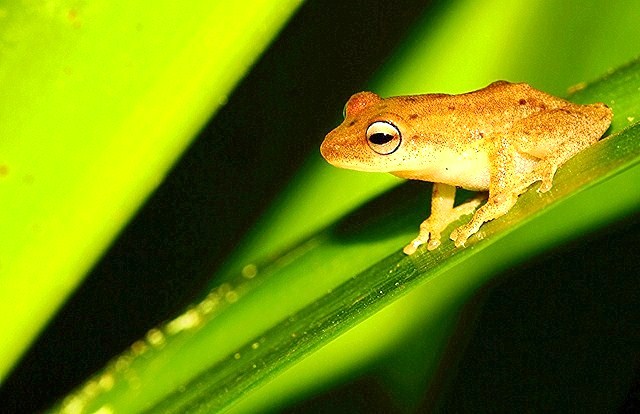Blue-eyed bush frog (Philautus neelanethrus) The blue-eyed bush frog (Philautus neelanethrus) is a small, distinctive frog which gains its common name from the bright blue ring running around the edge of its protruding, golden eyes. Its scientific name, neelanthrus, means ‘blue eyes’ in Sanskrit, a historical local dialect.
The skin of the blue-eyed bush frog varies between yellow and cream and there are brown dots and blotches on the upperside of the body, indicating areas of granulation which can differ in intensity between individuals. The skin on the underside of the body has round, white blotches and is also granulated. The skin on the wide head of the blue-eyed bush frog features circular brown spots, and the snout is pointed and protrudes forward beyond the mouth.
The colouration of the male blue-eyed bush frog becomes more yellow and vivid during the breeding season. The female blue-eyed bush frog is likely to be slightly larger than the male.
Vocalizations are made by the blue-eyed bush frog during the breeding season, using the unpigmented vocal sac in the throat. Calls usually begin as a shrill ‘treek’ and are followed by a recurring ‘tink’ note.
